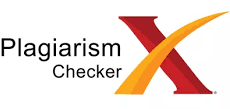MODEL EKONOMI SUMBERDAYA IKAN DEMERSAL YANG LESTARI DI PERAIRAN KABUPATEN REMBANG
Abstract
This study examines the level of utilization of demersal fish resources by using Schaefer Surplus Production Model and Gordon-Schaefer Bioeconomics Model. Fishing effort is a strategic effort in improving the welfare and life quality of coastal communities of Rembang District. This study aims to estimate the Maximum Sustainable Yield (MSY), Maximum Economic Yield (MEY), Open Accsess Equilibrium (OAE), and Economic Rents (ER) of sustainable demersal fish resources in Rembang District.Bioeconomics assessments was conducted by using secondary data: production data (catch) and unit vessel (effort) 2001-2006, and primary data: the average price of demersal fish catches per year, and the average cost per unit per vessel in years.The results showed that the level of sustainable production (CMSY) and sustainable efforts (EMSY) demersal fish resources was 4,943,425.25 kg per year and 164 ships per year. These results indicate that the rate of utilization of demersal fish resources Rembang district are 97% (2001), 117% (2002), 92% (2005) and had been overfishing in 2002 or exceed the Total Allowable Catch (FAO, 1995) is 80% of the value of sustainable production (CMSY). Optimization profit (ERMEY) of demersal fisheries can still be achieved by reducing the number of fleet at economic efforts (EMEY): 106 units per year and optimum economic production (CMEY): 4,323,595.25 kg per year.
Keywords
Bioeconomic; Overfishing; Demersal Fish; Rembang District
Full Text:
PDFDOI: http://dx.doi.org/10.12928/optimum.v2i2.7878
Refbacks
- There are currently no refbacks.

This work is licensed under a Creative Commons Attribution-ShareAlike 4.0 International License.
Optimum: Jurnal Ekonomi dan Pembangunan
Fakultas Ekonomi dan Bisnis Universitas Ahmad Dahlan
Kampus 1 Jalan Kapas 9 Yogyakarta 55166 INDONESIA
Phone: +62-274-563515
E-mail:optimum@uad.ac.id
p-ISSN:1411-6022 | e-ISSN: 2613-9464
This work is licensed under a Creative Commons Attribution 4.0 International License





